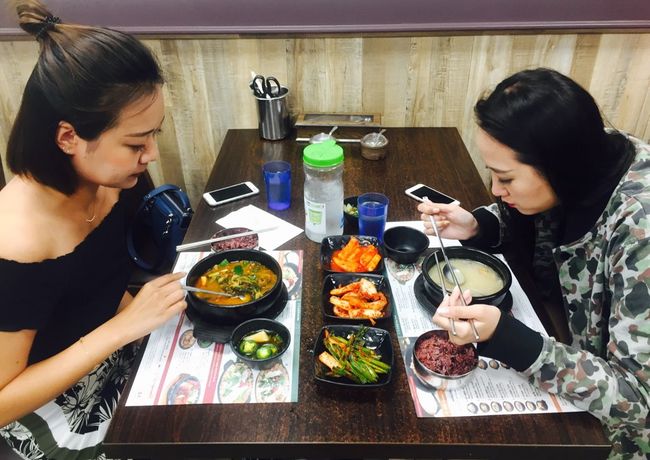
Restaurants in Los Angeles Koreatown have been frequently visited by Chinese-Americans for a while now, but even the eateries surrounding the neighborhood is now busy hosting non-Korean customers.
Many of those customers picked diversity in taste and affordable price as two of the main reasons for their preference for Korean food when they eat out.
The Korea Daily met with eight customers at a Koreatown restaurant recently.
One Chinese man in his mid-20s said he first visited Koreatown on a friend’s recommendation but has frequently visited the neighborhood since.
After getting his first taste of a gamjatang (spicy pork bone stew), he is now a fan of other Korean foods, including samgyupsal (pork belly), kalgooksoo (flour noodle soup) and steamed dumplings.
A Chinese woman in her early 20s lives in Santa Monica, but learned about Korean food through Korean dramas. “I still can’t eat a live Octopus, but Korean-style chicken is my favorite,” she said.
A 21-year-old Taiwanese man met with the Korea Daily at the Madang mall.
“I followed my friends to Koreatown and now I come here almost every night to drink soju,” he said. “The combination of soju and budaejjige (spicy sausage stew) is amazing!”
Many of them admitted that they first came to Koreatown with their Korean friends or were inspired after watching Korean dramas. Once they visit Koreatown, many of them were suddenly attracted by Korean foods’ affordability. Now, many non-Koreans visit Koreatown for other personal errands, including haircuts.
“Recently, Chinese customers make up more than half of our customer base,” said an employee at Kang Ho-dong Baekjeong, a Korean barbecue restaurant in L.A. “Customers in their 20s and 30s are the most frequent visitors, but we also get a lot of families.”
Thanks to such a high demand, Kang Ho-dong Baekjeong recently opened branches in Rowland Heights and Temple City. Some restaurants said that the rate of their Chinese visitors among all customers is sometimes as high as 80 percent.”
Industry experts say that the popularity of Korean food among non-Korean visitors was inspired by word of mouth. As the “Korean wave” continues to grow stronger, paid advertisements are not even necessary for many Korean businesses as social media does their jobs for them.
However, some Chinese visitors in Koreatown expressed their disappointment. A 20-year-old Chinese man from Monterey Park told the Korea Daily that he often waits for too long in line to be seated at restaurants and that parking causes too much inconvenience. Another 25-year-old San Gabriel resident said that Korean foods are not promoted enough outside of a few items.
By Jiyoung Kim





